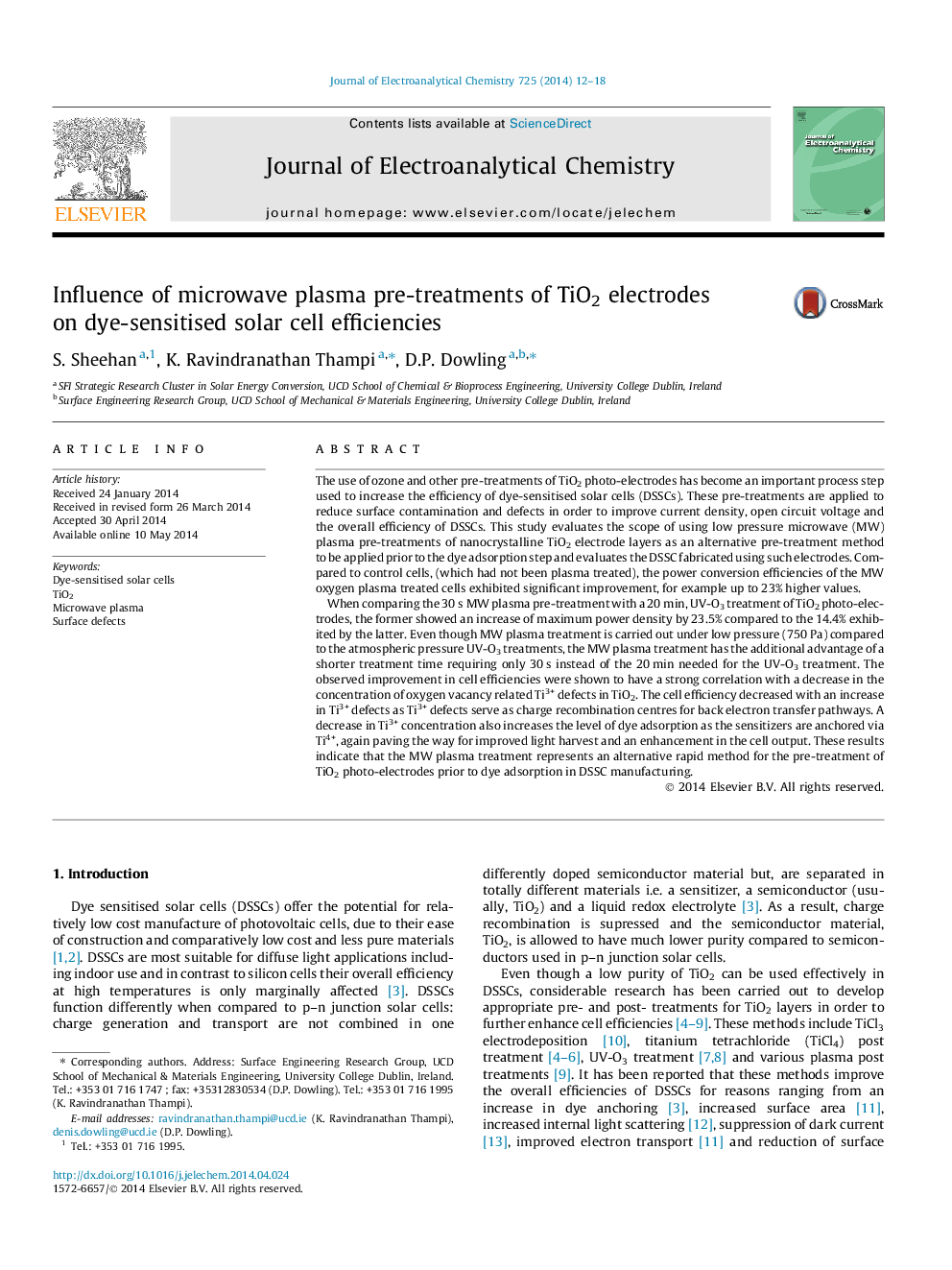| Article ID | Journal | Published Year | Pages | File Type |
|---|---|---|---|---|
| 218829 | Journal of Electroanalytical Chemistry | 2014 | 7 Pages |
•Power conversion efficiencies of MW oxygen plasma treated cells increased by 23%.•Cell efficiency decreased with the increased concentrations of Ti3+.•MW plasma treatment exhibited a greater increase in efficiency compared to UV ozone.
The use of ozone and other pre-treatments of TiO2 photo-electrodes has become an important process step used to increase the efficiency of dye-sensitised solar cells (DSSCs). These pre-treatments are applied to reduce surface contamination and defects in order to improve current density, open circuit voltage and the overall efficiency of DSSCs. This study evaluates the scope of using low pressure microwave (MW) plasma pre-treatments of nanocrystalline TiO2 electrode layers as an alternative pre-treatment method to be applied prior to the dye adsorption step and evaluates the DSSC fabricated using such electrodes. Compared to control cells, (which had not been plasma treated), the power conversion efficiencies of the MW oxygen plasma treated cells exhibited significant improvement, for example up to 23% higher values.When comparing the 30 s MW plasma pre-treatment with a 20 min, UV-O3 treatment of TiO2 photo-electrodes, the former showed an increase of maximum power density by 23.5% compared to the 14.4% exhibited by the latter. Even though MW plasma treatment is carried out under low pressure (750 Pa) compared to the atmospheric pressure UV-O3 treatments, the MW plasma treatment has the additional advantage of a shorter treatment time requiring only 30 s instead of the 20 min needed for the UV-O3 treatment. The observed improvement in cell efficiencies were shown to have a strong correlation with a decrease in the concentration of oxygen vacancy related Ti3+ defects in TiO2. The cell efficiency decreased with an increase in Ti3+ defects as Ti3+ defects serve as charge recombination centres for back electron transfer pathways. A decrease in Ti3+ concentration also increases the level of dye adsorption as the sensitizers are anchored via Ti4+, again paving the way for improved light harvest and an enhancement in the cell output. These results indicate that the MW plasma treatment represents an alternative rapid method for the pre-treatment of TiO2 photo-electrodes prior to dye adsorption in DSSC manufacturing.
